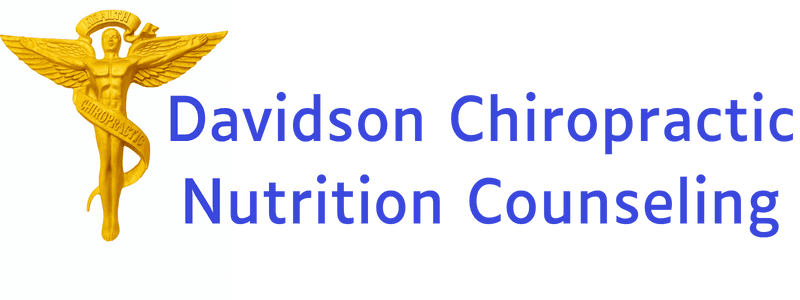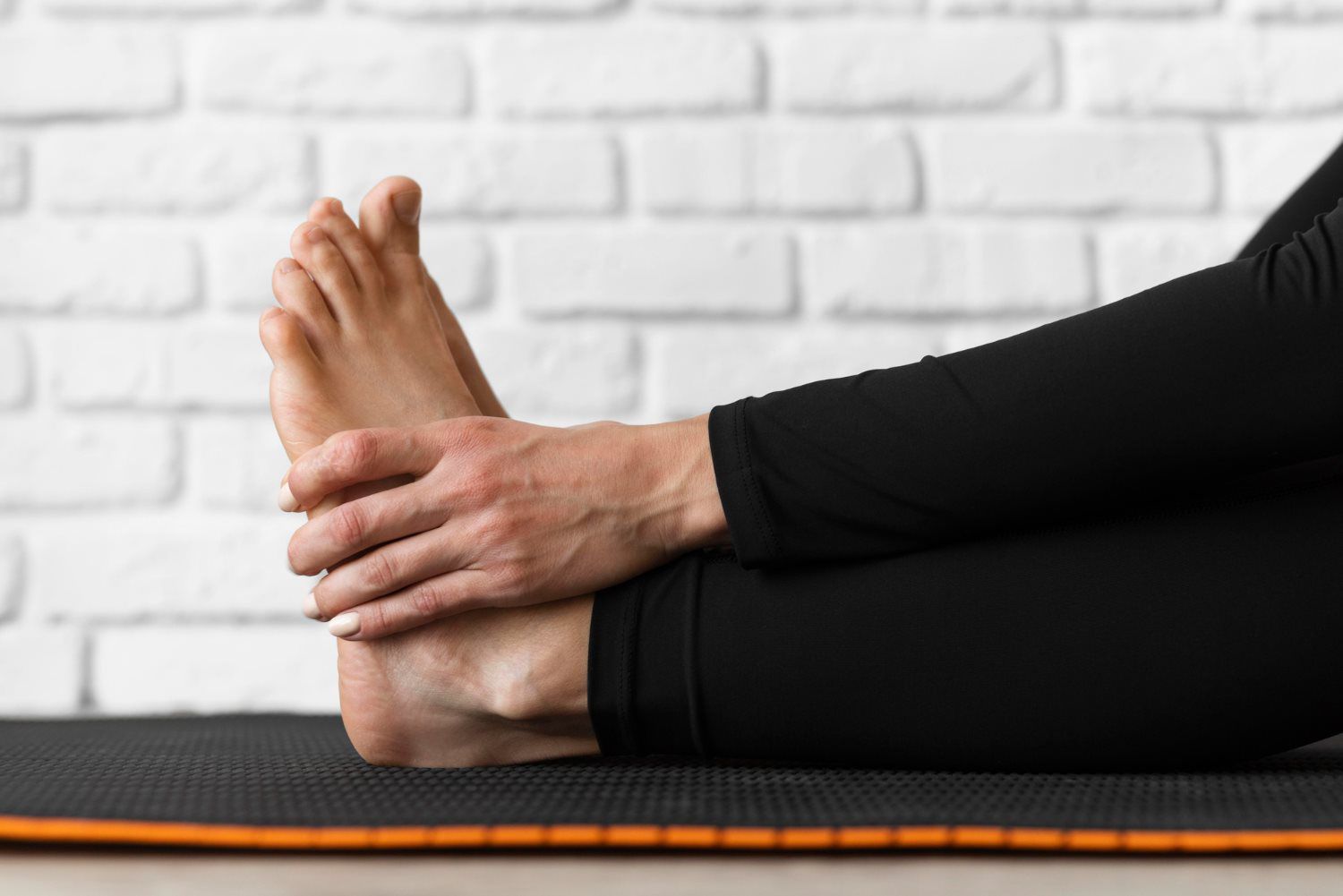Plantar Fasciitis
Relieve Plantar Fasciitis Pain Naturally: Discover Lasting Relief with Dr. Eric Davidson
Are you tired of waking up to stabbing heel pain that makes every step a struggle? Plantar fasciitis doesn't have to control your life. As a trusted chiropractor in Appleton, Wisconsin, Dr. Eric Davidson has helped thousands reclaim their mobility through targeted adjustments, personalized nutrition guidance, and holistic care. With over 35 years of experience since opening his practice in 1988, Dr. Davidson combines evidence-based chiropractic techniques with nutritional counseling to address the root causes of your pain—not just the symptoms. Imagine walking pain-free, enjoying your daily activities, and getting back to the life you love. It's possible, and it starts with a single step: contacting Dr. Davidson today.
Understanding Plantar Fasciitis: The Silent Saboteur of Your Steps
Plantar fasciitis is one of the most common causes of heel pain, affecting millions of people worldwide, particularly those between the ages of 40 and 60. At its core, this condition involves inflammation of the plantar fascia—a thick band of tissue that runs along the bottom of your foot, connecting your heel bone (calcaneus) to your toes. This fascia acts like a shock absorber, supporting the arch of your foot and distributing your body weight with every stride. When it becomes irritated or overstretched, it leads to micro-tears and chronic inflammation, resulting in that infamous sharp, stabbing pain in your heel.
But why does something as simple as walking become agonizing? The plantar fascia isn't just a passive structure; it's intricately connected to your entire musculoskeletal system. Misalignments in your spine, ankles, or even hips can throw off your gait, placing undue stress on this vital ligament. That's where chiropractic care shines—by restoring balance from the ground up, Dr. Davidson helps your body heal itself naturally.
In this comprehensive guide, we'll dive deep into the world of plantar fasciitis: its symptoms, causes, and most importantly, how a combination of gentle chiropractic adjustments, a nutrient-rich diet, and smart lifestyle tweaks can lead to profound relief. Backed by years of clinical success and patient stories from Appleton and beyond, this isn't just theory—it's a roadmap to recovery tailored for you.
The Telltale Signs: Recognizing Plantar Fasciitis Before It Worsens
If you've ever winced in pain the moment your feet hit the floor in the morning, you're not alone. The hallmark symptom of plantar fasciitis is intense heel pain, often described as a knife-like stab or deep ache, that strikes with the first few steps after periods of rest. This pain typically eases somewhat as you move around, only to return with a vengeance after prolonged standing, walking, or at the end of the day.
Other common symptoms include:
Burning or aching sensation along the bottom of the foot, extending toward the arch or toes.
Stiffness in the heel, making it hard to flex your foot.
Swelling around the heel, though not always visible.
Pain that worsens with activities like climbing stairs, running, or standing on tiptoes.
These symptoms can mimic other foot issues, like Achilles tendinitis or heel spurs, which is why a thorough evaluation is crucial. Dr. Davidson's approach begins with a detailed assessment, including gait analysis and orthopedic tests, to pinpoint the exact source of your discomfort. Early recognition is key—untreated plantar fasciitis can lead to compensatory issues like knee, hip, or back pain, creating a cascade of problems throughout your body.
In Davidson Chiropractic Nutrition Counseling, patients often share stories of how this pain disrupted their routines: missing family hikes, struggling through shifts at work, or dreading gym sessions. But with the right intervention, these stories turn into triumphs of restored freedom.
Unraveling the Causes: Why Your Feet Are Rebelling
Plantar fasciitis doesn't strike randomly; it's often the result of repetitive strain and biomechanical imbalances. The plantar fascia endures tremendous force—up to three times your body weight during running or jumping. Over time, factors like overuse, poor footwear, and lifestyle habits erode its resilience.
Key causes and risk factors include:
Overuse and Repetitive Stress: Jobs or activities involving prolonged standing (e.g., teachers, factory workers, runners) overload the fascia.
Biomechanical Issues: Flat feet, high arches, or uneven leg lengths alter weight distribution, straining the tissue.
Tight Muscles: Shortened calf muscles or Achilles tendons pull on the fascia, limiting flexibility.
Obesity or Sudden Weight Gain: Extra pounds increase impact on the heels.
Inadequate Footwear: Shoes lacking arch support or cushioning fail to protect the fascia.
Age-Related Changes: As we age, the fascia loses elasticity, making it more prone to tears.
What many overlook is the role of spinal health. Subluxations—misalignments in the spine—can disrupt nerve signals and muscle balance, indirectly contributing to foot problems. Dr. Davidson's expertise in full-body chiropractic care addresses these upstream issues, preventing recurrence.
In Appleton's active community, where outdoor pursuits like walking the Fox River Trail are common, these factors hit close to home. Understanding your unique triggers is the first step toward targeted healing.
Chiropractic Adjustments: The Foundation of Natural Relief
When conventional treatments like rest, ice, and over-the-counter painkillers fall short, it's time to consider chiropractic care—a non-invasive, drug-free option proven to tackle plantar fasciitis at its source. Chiropractic adjustments, or spinal manipulations, realign the body's structure, improving nerve function, joint mobility, and overall biomechanics.
How Adjustments Work for Plantar Fasciitis
Dr. Davidson employs precise, gentle techniques to target multiple areas:
Foot and Ankle Adjustments: Low-force manipulations to the talus, calcaneus, and metatarsal joints reduce restrictions in the foot's kinetic chain, easing tension on the plantar fascia.
Spinal Corrections: Adjustments to the lumbar spine and pelvis correct posture imbalances that alter gait, distributing weight more evenly across your feet.
Soft Tissue Therapies: Complementary methods like Graston technique or myofascial release break up adhesions in the fascia and surrounding muscles.
Fueling Recovery: The Power of a Healthy Diet and Nutrition
Healing plantar fasciitis isn't just about mechanics—it's about giving your body the tools to repair itself from within. Inflammation is the enemy, and your diet holds the key to taming it. As a chiropractor with specialized nutrition counseling, Dr. Davidson integrates dietary strategies to reduce swelling, support tissue regeneration, and boost overall vitality.
Anti-Inflammatory Eating: Your Daily Defense
Certain foods exacerbate inflammation, while others act as natural extinguishers. Pro-inflammatory culprits include processed sugars, trans fats, and excessive omega-6 fatty acids found in fried foods and refined oils. These can prolong fascia irritation, making pain linger.
Instead, embrace an anti-inflammatory diet rich in:
Omega-3 Fatty Acids: Fatty fish like salmon, walnuts, and flaxseeds counteract inflammation and promote fascia flexibility.
Antioxidant-Packed Fruits and Veggies: Berries, leafy greens, and turmeric provide vitamins C and E to combat oxidative stress.
Collagen-Boosting Foods: Bone broth, citrus fruits, and vitamin C-rich bell peppers aid in repairing micro-tears.
Magnesium-Rich Choices: Spinach, almonds, and avocados relax tight muscles around the foot.
Dr. Davidson's nutrition plans are personalized—considering your lifestyle, preferences, and any deficiencies uncovered through simple assessments. For instance, low vitamin D levels, common in Wisconsin's long winters, can worsen musculoskeletal pain; he may recommend sunny supplements or fortified foods.
Sample 7-Day Anti-Inflammatory Meal Plan
To get you started, here's a practical plan Dr. Davidson often shares:
Day
Monday
Tuesday
Wednesday
Thursday
Friday
Saturday
Sunday
Breakfast
Greek yogurt with berries and chia seeds
Oatmeal topped with walnuts and sliced banana
Smoothie: Spinach, pineapple, ginger, and flaxseed
Eggs scrambled with tomatoes and spinach
Avocado toast on whole-grain bread with poached egg
Chia pudding with mango and coconut
Berry smoothie bowl with seeds
Lunch
Quinoa salad with kale, chickpeas, and lemon-tahini dressing
Turkey wrap with spinach, avocado, and hummus in whole-grain tortilla
Lentil soup with carrots and turmeric
Arugula salad with beets, goat cheese, and olive oil vinaigrette
Chickpea salad with cucumber, feta, and olives
Falafel bowl with tahini and mixed greens
Tuna salad with mixed greens and olive oil
Dinner
Grilled salmon with steamed broccoli and sweet potato
Stir-fried tofu with bell peppers, onions, and brown rice
Baked chicken with asparagus and quinoa
Veggie stir-fry with tempeh and zucchini
Grilled trout with Brussels sprouts and wild rice
Vegetable curry with cauliflower rice
Roast lamb with rosemary, carrots, and potatoes
Snack
Handful of almonds
Apple slices with almond butter
Carrot sticks with guacamole
Yogurt parfait with blueberries
Mixed nuts and dark chocolate
Celery with peanut butter
Fresh fruit salad
Hydration is equally vital—aim for 8-10 glasses of water daily to keep tissues plump and flushed of toxins.
By pairing these nutritional shifts with adjustments, patients see faster results. "Dr. Davidson's diet tips turned my healing around," says local runner Mike. "The pain faded, and I felt energized for the first time in years."
A Holistic Path to Pain-Free Living: Your Treatment Journey with Dr. Davidson
At Davidson Chiropractic Nutrition Counseling, treatment is collaborative and comprehensive. Your journey might include:
Initial Consultation: A 45-minute deep dive into your history, symptoms, and goals.
Custom Adjustments: 2-3 sessions per week initially, tapering as progress builds.
Nutritional Guidance: Tailored meal plans, supplement recommendations (e.g., turmeric for inflammation), and progress tracking.
Home Care Toolkit: Stretches, self-massage techniques, and ergonomic tips for work and home.
Ongoing Support: Monthly check-ins to refine your plan and prevent flare-ups.
This integrated approach not only treats plantar fasciitis but enhances your overall health—improving sleep, energy, and immunity.
Why does it work so well? Because the body is interconnected. Adjustments restore alignment, nutrition fuels repair, and together, they create synergy for sustainable results.
Take Control of Your Steps Today:
Your Invitation to Healing
Your Invitation to Healing
Ready to silence the pain and step into a stronger, healthier you? Dr. Davidson offers a no-obligation consultation to explore how his proven approach can work for you—because every journey to wellness deserves a compassionate guide. Contact Dr. Davidson Now or visit 2110 S Memorial Dr, Appleton, WI 54915. Your pain-free future starts here.






